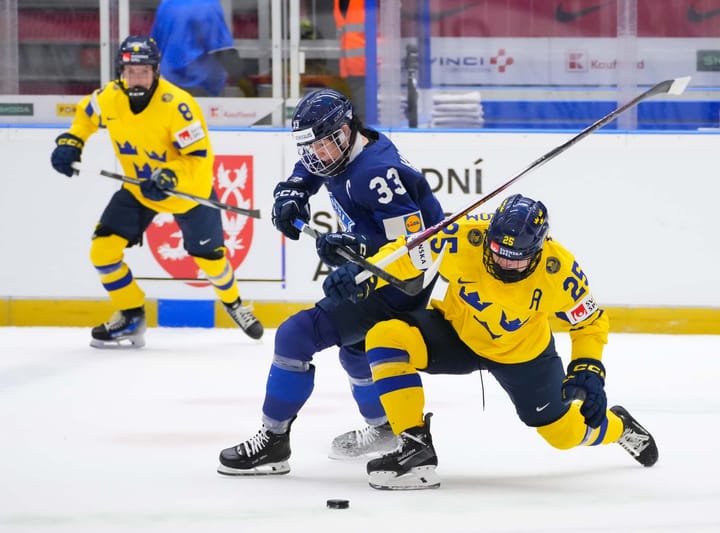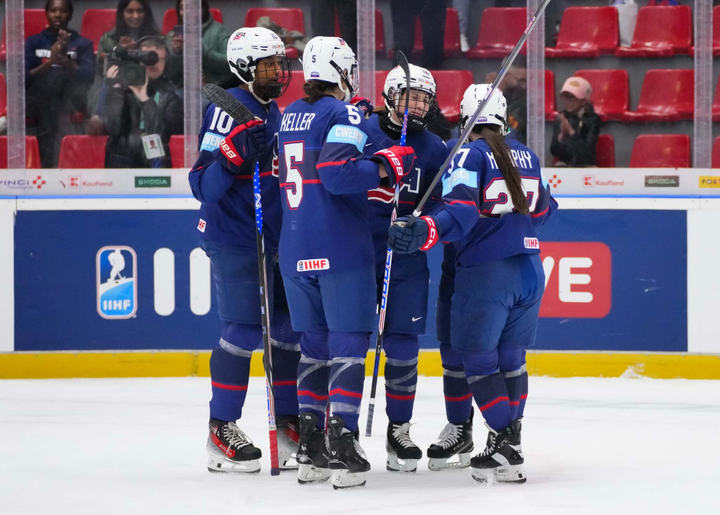Markey’s event map is a groundbreaking tool in women’s hockey analytics
Look, charts!
As women’s hockey continues to advance and grow, so too does its capacity for in-depth statistical analysis.
Access to analytics is something that is taken for granted in the major men’s sports. There’s such an abundance of advanced statistics, sabermetrics and #fancystats that it can be overwhelming for even the most devoted of fans. Debating the merit of analytics is becoming something of a past-time in the hockey community, as general managers are getting younger, teams are getting faster and even “old timers” like John Tortorella are being forced to adapt to the change from convention.
The problem is women’s hockey cannot join in the conversation about analytics if there are hardly any analytics to be conversed about in women’s hockey. Any and all advanced stats in women’s hockey exist thanks to massive individual undertakings.
Enter Carleen Markey and Jake Flancer. Markey used Flancer’s play-by-play data from the 2017-18 NWHL season to create a play-by-play event map, the most detailed of its kind in women’s hockey. The map can be seen and played with here.
The interactive map allows users to sift through shots, blocks, saves, turnovers and penalties on a team-by-team basis. Data can be sorted by player, team, period, date, game location and opposing goaltender.
This is a tremendous starting point for tracking women’s hockey data. One of the focal points of recent studies of hockey analytics is shot quality, and where opportunities are generated on the ice. Former NHL goaltender Steve Valiquette founded Clear Sight Analytics to research data regarding shot danger and how best to beat goalies that are improving by the day.
Related
Women’s Hockey Analytics Primer
Heat maps are becoming common in the NHL. They provide a quick and easy to comprehend evaluation of how effective a team was in getting to the net. Proximity does have a direct positive relationship with scoring success, after all.
With Markey’s map and Flancer’s findings, it is now possible to delve further into past NWHL data and use it to predict and inform analysis of future events.
For example, the Buffalo Beauts were excellent at generating shots from inside the face-off dots at 5-on-5. Most of their goals came from below the hashmarks. From this, we can determine that the Beauts create the right kind of havoc in front of the crease and have a natural nose for the net. Considering the Beauts added net-driver Dani Cameranesi and shot-machine Kelly Babstock in the off-season, teams will have their hands full protecting the house in 2018-19.
Compare this to the shot/goal chart for the Connecticut Whale, who had a tougher time getting to high-danger areas and an even tougher time scoring. Connecticut had more goals come from sharp angles and further away in the zone, which is a lower-percentage shot. It now becomes more apparent that the Whale need to revamp their offense with more aggressive forechecking and a change in coaching philosophy that creates more opportunities from the heart of the ice.
Connecticut’s problem is further exemplified by the play of Metropolitan Riveters goaltender Katie Fitzgerald, who did not allow a goal from beyond the hashmarks all season in 2017-18. This most likely means two things: 1) the Riveters probably had an effective defensive scheme that allowed for clear sight on shots from a distance, and 2) Fitzgerald does not allow many softies.
Shots with clear sight score once every 34 shots, per Clear Sight Analytics. Even if the goaltender allows a rebound off that shot, the effectiveness sinks even lower to once every 110 shots. If a shot has a screen set for it, it has a one-in-seven chance of succeeding.
And with the arrival of Shannon Szabados, Katie Burt, Maria Sorokina and Nicole Hensley to the NWHL, the goaltending in the league has only gotten better. Getting to high-danger areas is more of a premium than ever around the league.
Markey and Flancer’s map is the kind of necessary data needed for the advancement of women’s hockey analytics. The complicated cannot be determined without the basic first serving as a foundation. Play-by-play tracking does not tell the whole story, as it only tells of the end result. However, it is an indication of what has been and may continue to be in the context of style and shot preferences.





Comments ()